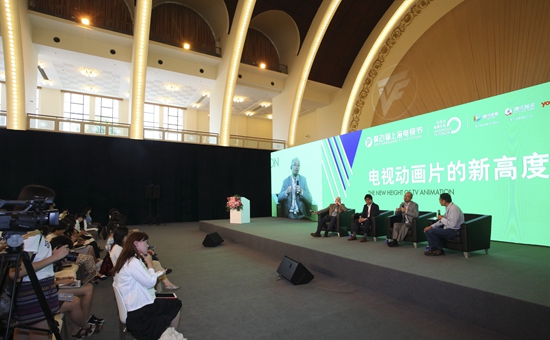The Keys to Development of Chinese TV Animations

The new media and online sources are challenging traditional TV programs as lots of audience now prefer to watch the contents on computers and mobile devices. For TV animation producers, creating high quality content is becoming more important to attract more audience.
“What we have found is that children around the world are very quick to adapt the technology. We have to produce programs that can entertain audience, not just on television, but also through the internet,” said Tim Brooke Hunt, founding member of Asian Animation Summit and former controller of Children’s for ABC at yesterday’s Magnolia Forum on TV animations reaching new heights.
Wang Chuan, chief creative officer and chairman of the Board of Vasoon Animation, explained that producing a TV animation now is about developinga project in different fields, from TV, film to game.
“The new height of TV is to produce programs for television when the internet is taking away audience as well as capital,” he said.
The key is to create contents with strong stories for the target audience of TV animation at relatively lower cost.
“At the end of the day we must remember that children around the world are the same,” Hunt said.
The audience of animation has also changed over the years and is no longer limited to children. Adults are watching animation TV series and films as well.
Minami Masahiko, founder of BONES and animation producer, said that in Japan, “the audience is also no longer limited to children.”
“Thanks to the booming and prosperity of the cartoon industry, we have been able to capture a larger group of audience of the animation,” Masahiko said.
International partnership is another key for TV animations to thrive, and Asia has become a major market in today’s animation industry.
“In Australia, we used to make our animation programs and partnerships with producers in Canada, UK and Europe. However, what is happening now in Australia is that we realize ideal partners of our animation industry are in our region in Asia,” Hung said.



